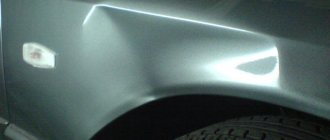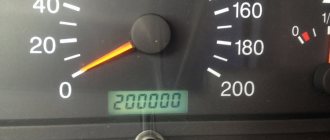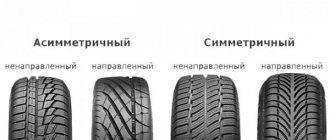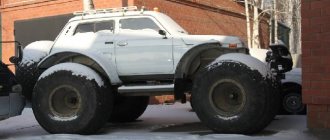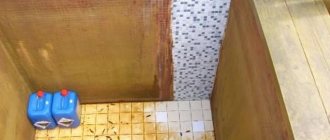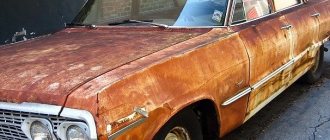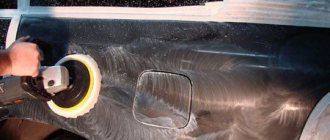Sooner or later, metal products show signs of corrosion. Rust appears; signs of corrosion can be found on padlocks, metal structures, and units. The editors of the site will tell you how to remove rust from a metal surface effectively and easily.
What is metal corrosion? This is a completely understandable chemical process that destroys a metal surface. Most often, corrosion occurs as a result of chemical processes associated with environmental influences.
Interesting fact!
10% of all metal products are written off ahead of schedule. The reason is corrosion.
Corrosion is somewhat reminiscent of caries; it can only be dealt with radically: clean, treat, restore.
How to remove rust from metal: mechanical treatment
Cleaning with abrasives is the first thing that comes to mind if you start thinking about how to remove rust from metal. If it can be cleaned with a brush and soda, then to combat deeper corrosion processes, professional tools are used: grinders with attachments, files, sandpaper of varying hardness.
Advice!
Only perfectly smooth surfaces can be effectively cleaned with a grinder and abrasives.
But if it is necessary to remove rust from large metal products and assemblies, special sandblasting machines are used.
Which chemicals are easier to remove rust from metal?
The most effective means for removing rust at home are chemical compounds.
How to get rid of rust on metal with zinc chloride
Cleaning metal from rust can be done with zinc chloride and potassium tartaric acid in a ratio of 5 g and 0.5 g. The substances are diluted in 100 ml of water. By increasing the acidity, the rust will gradually dissolve.
Important!
During processing, use with protective equipment on your hands.
Hydrochloric or sulfuric acid
Hydrochloric or sulfuric acids are among the most effective liquids for cleaning metal corrosion. These substances are used together with inhibitors.
Special inhibitors help suppress the corrosion process. They are used in conjunction with acids to suppress the destructive effects of acids on metal.
Advice!
The metal product is immersed in a solution of hexamine acid (a 5% solution is prepared at 0.5 g per 1 liter). Larger fragments are treated with a brush.
Oxalic acid
Organic acid was first synthesized in 1824. Working with it requires certain skills. Oxalic acid vapors are poisonous, so it is necessary to work in special respirators.
The composition is applied to the surface with a special brush.
Lactic acid
Lactic acid is another substance that corrodes rust well.
For chemical cleansing you need to combine substances in the following proportions:
- 100 g of petroleum jelly or paraffin;
- 50 g lactic acid.
The plaque is simply corroded with a bang, and the remains are cleaned off along with the paraffin base.
Advice!
You can also use fruit acid.
A fruit like lime is perfect for cleansing. Salt is poured onto the rusty surface and a few drops of lime are squeezed on top.
Folk remedies for removing rust from metal
Let's talk about the most common and effective methods of cleaning rust using traditional methods.
How to remove rust from metal with soda
Baking soda is one of the very first remedies that housewives use to combat the first signs of rust on dishes.
Vinegar as a rust remover from metal
Ordinary acetic acid has similar cleaning properties. Everyone is familiar with the effectiveness of using vinegar in combination with citric acid.
Advice!
Ordinary Coca-Cola will also help to clean the kettle of carbon deposits. A glass of soda simply needs to be boiled by adding a tablespoon of vinegar to the solution.
Hydrogen peroxide against corrosion
Hydrogen peroxide is an inexpensive but most effective way to combat scale.
What is the best way to clean different surfaces?
How to combat corrosion on non-metal surfaces? Depending on the type of surface on which the rust has formed, the methods for removing it will differ:
- Tile. To clean it, it is better to use improvised means, for example, acetic or citric acid. The composition is applied to the material used to treat the problem area.
- Coins. An ordinary coin can be immersed in Cola by pouring it into a glass. After 12 hours there will be no trace of corrosion left. If the coin is rare, then preference is given to laser cleaning or electrolysis.
- Linoleum. You can remove rust from linoleum using acetic acid. The solution should not be made too concentrated so as not to spoil the floor covering. The maximum processing time is 15 minutes.
- Plastic. You can get rid of rust on plastic using 9% acetic acid. If the stain is deeply ingrained, then the recipe is strengthened with soda.
- Horseshoe. The horseshoe can be soaked in a solution of phosphoric acid for several hours.
Tools. The heat treatment method is suitable for processing tools. Calcined iron must be cleaned with a wire brush.- Skates. It is better to clean rusted blades mechanically. In this way, it will be possible not only to remove corrosion, but also to sharpen the skates.
- Cloth. Rust stains from things are removed using improvised means. Preference is given to citric acid. After removing the stain, the clothes are washed. Read about cleaning white clothes here.
- Bath. You can remove rust in the bathroom using household chemicals containing phosphoric acid. An example of such a remedy is Cillit. Another option is to use Coca-Cola.
- Chromium. Chrome surfaces should not be rubbed. To get rid of corrosion, use vinegar, citric acid, or rust converters, for example, WD-40.
- Pan. A cast iron frying pan can be cleaned of rust mechanically using a wire brush.
- Pipe. If corrosion appears on the surface of the product, then resort to mechanical cleaning. When it is inside the pipe, liquid acid-containing compounds or converters are used.
- Knife. The best solution in this case would be sandpaper.
- Cast iron. This metal can be cleaned with baking soda, salt, acetic acid or sandpaper. It is not afraid of contact with acids and harsh abrasives.
- Automobile. You can get rid of corrosion by electrolysis, or use specialized compounds, such as paint or primer.
Some unusual means and methods to remove rust from metal
The list of working anti-corrosion compounds is not complete. There is also Coca-Cola, beloved by many, tomato paste and such a physical process as ordinary electrolysis.
Will regular tomato paste help: we study the question
It would seem, what is it about ordinary tomato paste that allows you to cope with rust? It turns out that natural acids, which are in abundance in the paste, much more than in a regular tomato, can effectively clean any surfaces from rust.
It is enough to apply a few drops of paste to the rust and smooth it with a gloved hand. You will notice the first traces of cleansing within 15 minutes. After cleaning, the residues are removed with a regular rag.
Physics - to help! Electrolysis as an effective way to combat rust
Some knowledge of physics will be required. This cleansing option should be approached with extreme caution, since working with electricity is always life-threatening.
Stages of work:
- The first stage is to create a special solution of caustic soda in an amount of 150 mg. for 15 liters of water.
- We prepare the anode and electrode. The anode is installed in such a way that it does not touch the walls of the container. A steel plate can be used as an electrode.
- Using special clamps to the anode, we hook the wire directed to the positive red terminal (from the battery).
- The end of the second wire is fixed to the object being cleaned. In order for the current to pass efficiently, it is stripped of insulation.
- We attach this wire to the black terminal.
The cleaning process will take several hours, sediment may form, and the water itself will acquire a characteristic red color.
Cleanliness in the house not only pleases the household, but is also one of the most important in terms of hygiene. Various contaminants in the interior can aggravate the appearance of mold, mildew, and various bacteria harmful to our body. Most stains are easily removed, and with timely cleaning, much effort will not be spent on removing them. Other types of contaminants, such as rusty stains on plumbing fixtures, pure metal, sanitary ware or plastic, even if they have recently appeared, are problematic to remove. In this article we will tell you how to remove rust using simple means, without resorting to the use of expensive household chemicals.
- Rust stains, in most cases, are removed with acids, so be sure to wear gloves and protect your eyes and clothing. During the procedure, children and pets must be removed from the premises. Be sure to ventilate the apartment afterwards.
- The methods described in this article for enamel surfaces can be applied once every 1-2 months. They are not suitable for everyday cleaning, as the substances used can damage the enamel. Of course, at first glance, you won't notice it. But acids, interacting with the glaze, thin it, and microcracks form on the smooth surface, which in the future will even more attract various pollutants.
- Before applying the product, rinse and clean the product from other contaminants.
- Rinse the surface with water and dry it with a clean cloth.
- Then follow the instructions.
How to get rid of it?
There are many methods to combat rust. You can get rid of it using:
- folk and store remedies,
- by electrolysis and mechanical cleaning,
- using a laser.
Folk methods of struggle
Folk remedies for combating corrosion are highly effective and inexpensive. The most popular recipes for removing rust:
Orthophosphoric acid . It is applied to the surface of the product in the form of a solution, left for about an hour, and then washed off with water.
- Remove with Coca-Cola .
This carbonated drink is a source of phosphoric acid, so it can be used to combat oxides on metal. It is necessary to purchase a sufficient amount of Cola to completely immerse the product in it. The holding time is 12 hours, after which it needs to be taken out, rinsed and dried. - Lemon acid . To prepare the solution you will need 40-50 g of citric acid and 1 liter of water. The product can be completely immersed in the composition, or only damaged areas can be treated with it. The thicker the rust layer, the more concentrated the solution should be.
- Battery. To combat corrosion you will need a zinc battery, phosphoric acid, cotton pads, and wires.
The battery, wrapped with a cotton pad, is connected with a wire to the “+” of the battery. After that, the battery soaked in acid is pressed to the damaged area. Positive zinc ions will settle on the metal, creating a protective film on it. After completing the procedure, the body is washed with a soda solution to neutralize the acid.
After applying any composition, the surface must be thoroughly rinsed to remove any remaining product. Acids, if left on the product for a long time, can damage undamaged metal.
Even more traditional ways to remove rust are here.
Mechanical cleaning
You can get rid of rust by mechanical cleaning. To remove rust, use the following tools:
Wire brushes .
Scrub off corrosion by hand. This method is suitable for those surfaces that are covered with a thick layer of rust. Weld seams are processed in the same way. During the procedure, a lot of dust is generated. The method itself is not very effective; it will not be possible to completely remove corrosion.- Sanding discs . This is a highly effective method that allows you to clean the surface almost 100%. However, you need to use the tool correctly. If you lack experience, there is a risk of removing intact metal.
- Sandblasting machine . A jet of sand released under high pressure is directed onto the damaged area. The method is effective; it can be used to work on hard-to-reach areas that cannot be reached with tools.
- Water jet cleaning . The surface is treated with a water jet using abrasive particles. The main disadvantage of this method is that it requires a special unit to implement it.
- Aluminium foil . This is the simplest and most affordable, but least effective method of cleaning. In this case, the rust is removed with a ball formed from ordinary food foil.
- Sandpaper . This inexpensive abrasive can be found at home or in the garage of car owners.
Mechanical cleaning is always associated with the appearance of a large amount of metal dust. Therefore, when carrying out work, you need to protect your eyes and respiratory organs.
Removal by electrolysis
Using electrolysis, you can not only get rid of corrosion, but also restore oxidized iron oxide, converting it into a metal film.
This method has a number of advantages, including:
- safety for human health;
- no toxic fumes;
- electrolysis does not destroy undamaged metal, acting exclusively on rust.
How to remove rust using electrolysis? Procedure:
Prepare a solution based on 3 liters of water and 1 teaspoon of soda, pour it into a plastic bowl.
- Immerse the part that needs cleaning in the liquid.
- Connect the power by connecting the electrode to the positive conductor (positive on the battery). The electrode can be a steel or stainless steel plate.
- Connect the item to be cleaned to the negative side of the battery.
- Turn on the power. If everything was done correctly, a reaction will start and bubbles will appear on the parts.
To completely remove rust, it most often takes about 6 hours. After the specified time, the battery is disconnected, the part is removed from the solution, rinsed under running water and dried in the sun.
The solution can only be poured into a plastic basin. A metal container cannot be used.
Complete instructions for removing rust by electrolysis are here.
How to remove iron by heat treatment?
Metal layers damaged by corrosion can be burned out using an acetylene torch . To do this, the flame is directed to the affected area and held until the rust melts and evaporates. This method is easy to use, but has certain disadvantages.
Firstly, it can only be used on unpainted metals. Secondly, it will not be possible to carry out high-quality cleaning. After completion of the heat treatment, mechanical removal of rust or the application of specialized compounds will be required.
How can you quickly remove it with a laser?
Rust can be removed using a laser. This is one of the most effective and safe ways to combat corrosion.
However, it is not without its drawbacks, the main one of which is the need to purchase an expensive laser system. The minimum cost of a portable laser is 120,000 rubles .
The essence of the method: the metal is scanned using a special device, after which a laser beam is directed at it and the damaged area is systematically worked on. When exposed to high temperatures, corrosion simply evaporates.
No additional processing is required. The laser removes only damaged metal without affecting entire areas . Read more about laser cleaning of metal from rust here, about laser cleaners here.
How to clean with special compounds?
How else can you remove rust and clean metal? To combat rust, you can find specialized compounds on sale. These include:
- Converters and neutralizers .
They are chemical solutions that are applied to iron or an iron alloy to prevent further corrosion. By reacting with the damaged metal, the converter transforms it into a protective film. It will stay on the surface of the product for some time, preventing moisture and oxygen from destroying it. The stores offer a wide range of converters and neutralizers. Their prices vary depending on the manufacturer and outlet. The average cost of such compositions is 150 – 200 rubles. Dye. To combat corrosion, both conventional oil-based paints and special anti-rust paint solutions are used.
Classic paint is applied to a previously cleaned surface. Its main disadvantage is that rust can progress underneath it. Therefore, it is better to give preference to special compounds. They can be applied to a thin layer of rust.Such paints not only prevent its further spread and protect the metal from corrosion, but also transform oxides. This is possible thanks to a unique formula consisting of several components.
The average price for 1 kg of rust paint is 300 rubles, although you can find compositions that cost up to 2,000 rubles.
- Priming. On sale you can find primers that contain additives that modify rust into a protective layer. Primers level the surface, after which paint is immediately applied to it. The average price of primer enamel is 300 rubles.
How to remove rust from clean metal at home?
Coca Cola
- This is a very modern and effective means for removing rust from metal.
- Pour the drink onto a clean, dried surface and wait half an hour.
- If it is heavily soiled, soak a dry cloth in the liquid and place it on the stain. If the item is small, it can be placed in a container filled with Coca-Cola. Exposure time is half an hour to an hour.
- Then take a brush or non-metallic scrub brush and scrub the rust.
- Finally, simply rinse the product with water.
- If necessary, the procedure can be repeated.
Table vinegar and lemon juice
This method is more suitable for severe corrosion than for subtle rust marks.
- Mix the ingredients in equal proportions.
- Moisten a rag with this mixture and apply to the problem area for 2 hours.
- Then clean, rinse with water and dry the metal.
Potatoes and salt
- Cut the raw potato and sprinkle the flesh with salt.
- Next, rub the metal surface with the cut. To enhance the effect, leave the potatoes on the rust for 15 minutes.
- Rinse and dry the product.
How to remove red marks from nickel and chrome surfaces?
For this type of coating, the use of aggressive acids is contraindicated to avoid damage to the appearance. For example, to effectively remove red stains from a sink or nickel- or chrome-plated plumbing, you can use fish or any animal oil.
- Simply apply the melted product to the stains and forget about them for a few days.
- After the specified time has passed, wipe the product with a clean soft cloth soaked in ammonia.
- To clean light rust marks on chrome, prepare a mixture: mix lemon juice and table salt in a 1:1 ratio.
- Apply the mixture to the stain and leave for 10 minutes.
- Finally, simply rinse the treated area with water and wipe dry.
Cleaning rust from sanitaryware and tiles
Advice! If rusty traces appear in the toilet, you need to start checking with the internal metal parts from the toilet cistern. This is the first reason for rust to appear on plumbing fixtures. Replace the part, thereby eliminating further leakage in the toilet and contamination with red spots.
Oxalic acid and ammonia
- Sprinkle the acid powder directly onto the wetted surface and leave to act for 1 hour.
- Then, without rinsing, wipe the contaminated area with a sponge soaked in ammonia.
- Rinse with plenty of water.
Hydrochloric acid
Perhaps one of the most effective ways to combat rust marks on sanitaryware.
Attention!
- Do not forget about precautions and protection of mucous membranes and skin!
- Don't use a brush!
- Carefully pour a small amount of acid directly onto the stain.
- Leave the liquid for a couple of minutes to act.
- Then rinse the surface thoroughly with plenty of water.
Peroxide and ammonia
- Mix the two ingredients in the following proportions: for 10 parts of ammonia, take 1 part of peroxide.
- Apply the solution to red spots for 2 hours.
- Then scrub thoroughly with a sponge and rinse with plenty of water.
Table vinegar
- Apply the liquid to a clean, dry cloth.
- Apply to the problem area for half an hour.
- Then rub the dirt with the same cloth and rinse with water.
Kerosene
We proceed in the same way as with vinegar.
Attention!
Don't forget to wear gloves and ventilate the room!
- It is necessary to moisten a rag with liquid and leave it on the rusty spots for half an hour.
- Wipe the problem area with a kerosene rag and clean the glaze with plenty of water.
- If necessary, this method can be repeated until the rust marks completely disappear.
Removing rust from bathtubs and other enameled objects
- In a clean, dry half-liter glass jar, mix 100 ml of ammonia and 50 ml of hydrogen peroxide. Using a dry sponge or rag, apply the mixture to the rust and wait 10-15 minutes. Then simply rinse the solution with water and clean the surface with any household cleaning powder.
- Prepare the mixture in a glass jar: add 2 tablespoons of salt to 100 ml of wine vinegar, mix and heat the solution in the microwave to a temperature of 60-65 degrees. Use the resulting mixture to wipe off the dirt and then rinse everything off with cold water.
- Hydrochloric acid is a solution that perfectly removes rust marks from enameled metal products. Don't forget about precautions! Apply the mixture to a dry cloth and apply to the problem area for 10-15 minutes. After the cleaning procedure, thoroughly rinse the treated surface with plenty of water, then, if the method was used in the bathroom, wash with detergent and rinse again.
What is the best way to remove rust stains from plastic and acrylic?
- A method that will help you deal with stubborn stains on any plastic or acrylic surface. Take a lemon and make a fresh cut. Sprinkle the cut with salt and wipe away any rust marks. There is no need to wait: wash off the treatment composition immediately. Repeat the procedure if necessary.
- Pure rubbing alcohol can easily remove minor rust marks. Apply the liquid to a cotton pad and wipe away any dirt.
- Undiluted white will help remove red marks from plastic window sills. Simply apply bleach to the stain and rinse off after 1 minute.
Attention!
Use white only on thick and dense plastic! It is not recommended to use it for cleaning plastic panels!
Carpet
Rust stains on the carpet.
The metal legs of a sofa or nightstand may one day ruin your carpet with unattractive rust stains. It is especially unpleasant to discover them when rearranging them, because you will no longer be able to hide the stain. Keep in mind, removing a rust stain is not an easy task, but it’s still worth a try. To do this, sprinkle a little table salt on the stain and cover it with a lint-free cloth soaked in white vinegar. The salt and acids in the vinegar will react, gradually dissolving the rust stain. After half an hour, clean the carpet from any remaining cleaning solution. By the way, in addition to the cleaning effect, this product helps to cope with unpleasant odors.
We fight traces of rust on glass
On this type of material, you can use any method described in this article. But products containing acids and the proven method of using Coca-Cola have proven themselves best. One feature: the time to clean rusty marks from glass is unlimited, that is, the interaction of a particular substance on a given material can be as long as necessary to completely eliminate the contamination.
Dear visitor! If you know other methods on how to remove stains, please leave your experience in the comments.
Rust is a product of the interaction of metal with oxygen in the air.
The oxidation process (corrosion) is accompanied by the gradual destruction of the metal surface and the formation of a red (rusty) powder.
Metal corrosion actively occurs in conditions of high air humidity or directly in water, and also when exposed to an aggressive environment (salts, acids and their solutions).
In order for a metal product to serve for many years, its surface must be reliably protected from exposure to atmospheric or other moisture, acids and salt solutions.
What to do if rust does form? How to remove rust from metal on the surface of various metal products - a car, a household sink, children's skates?
Oxides formed on the surface (iron metahydroxide) can be removed mechanically or chemically.
Mechanical cleaning involves grinding the surface. This removes the oxide layer, but does not stop the chemical processes already running in the surface layers of the material.
When removing corrosion, chemicals interact with the formed iron oxides and neutralize the oxidation reactions that occur.
Also, in some cases, it is impossible to remove rust by mechanical abrasion due to design features (for example, a threaded connection).
Do you use cutlery made from precious metals? Read how to clean gold-plated spoons with your own hands.
Removal from body
Rust on the car body leads to its accelerated destruction and failure.
Such stains on the body are first thoroughly washed and removed mechanically (sandblasting, sanding machine or sandpaper).
Then they are degreased and treated with chemical anti-corrosion agents. After this, the surface is treated with a converter, covered with anti-corrosion primer and painted.
Rust stains on the bottom of a metal bathtub can be removed with vinegar. It is poured onto the stain and left to react for a day. Then wash off with water.
Contamination on the side surface of the bathtub is sprayed with vinegar from a spray bottle several times as it dries.
Washing a car with a regular rag is a very long and labor-intensive process. Read on to learn how to choose the right pump for washing your car.
The use of chemical reagents requires the necessary protection of hands, eyes, face, other exposed skin and respiratory organs.
After removing corrosion, it is necessary to take measures to prevent its further appearance and development - coat with an anti-corrosion substance or prime, paint, varnish the cleaned metal surface.
Due to the fact that many objects in the apartment are metal or have metal parts, almost every person is ever faced with the need to wash off rust. Corrosion does not bode well. Guys are worried that it will appear on the car body, the right tool. Girls are worried about spoons, pans and other kitchen utensils.
If you find that something is covered with a brown-orange coating, do not rush to throw it away. By understanding how to remove rust from metal, you can save money on purchasing new items. You can try to stop the corrosive effects using available means.
Description of the disease
Rust affects not only all types of fruit and berry crops (currants, apple trees, cherries, pears, raspberries, gooseberries, serviceberries, plums, cherries), but also a large number of ornamental trees and shrubs (willow, barberry, cotoneaster, bladderwort), herbaceous ( lily, hyacinth, tulip, carnation, lily of the valley) and even conifers (juniper, thuja, cypress, fir, cedar pine, etc.).
Only a small part of the plants on which this terrible disease can be found is mentioned here. Rust is caused by rust fungi (order Uredinales) of the teliomycetes class. All of them are highly specialized parasites with a complete or incomplete development cycle. Diagnostic signs are sporulation formed at different stages of pathogen development: aecia, uredinio- and telio-pustules. Sporulations are compactions on leaves, needles or plant bark (pustules), from which spores of a characteristic “rusty” (bright orange, yellow-brown, bright brown) color spill out. A large number of rust fungi develop on several host plants. Even herbaceous plants (weeds) can be a second host of the fungus. One of the stages of disease development may occur on weeds (usually invisible to the naked eye).
The conditions for the development of rust diseases on plants are high spring humidity and improper planting. Most often, this is a high crowding of plants and their incorrect arrangement, which were planted incorrectly when they were still small. In order to eliminate this factor, it is advisable, even at the stage of planting, to use the services of a dendrologist, who will give recommendations on the correct arrangement of plants, taking into account the speed and nature of their growth, preferences for certain lighting conditions, humidity, etc. The dendrologist will give recommendations on the proper care of plants, since rust can also occur due to incorrect selection of the dose and type of fertilizer.
The disease does not occur quickly and does not lead to sudden death of the plant. As a rule, this is preceded by a stage of oppression, which lasts one to two years. It is at the stage of oppression that you can notice rusty sporulation of the fungus. And it is at this stage that it is necessary to take measures to protect and treat the plant.
Causes of corrosion
If a metal that contains certain additives or impurities (for example, carbon) comes into contact with liquid, air or other powerful oxidizing agent/acid, it becomes corrosive. If salt (sea water) is present in the liquid, metal corrosion increases. This is due to electrochemical reactions. Pure iron is quite resistant to the influence of water and air. As with other metals, the passivation layer provides protection against oxidation. This layer turns into rust due to the combined effects of 2 reagents. Other corrosive factors include sulfur dioxide and carbon dioxide. Under such aggressive conditions, different types of iron hydroxide appear. As hydroxide forms and moves away from the surface, the next layer of metal is subject to corrosion. Metal corrosion will end only when the iron is destroyed or the aggressive factors are eliminated.
How to Prevent Rust by Painting Metal Surfaces
Coating the surface with a layer of paint is the most common and accessible method to prevent rust and corrosion of metal.
The corrosion process is moisture and an oxidizing agent interacting with the surface of the metal. Thus, when the metal is coated with a protective barrier of paint, neither moisture nor oxidizing agents can come into contact with the metal itself and there is no corrosion.
However, the paint itself is subject to degradation. A new coat of paint should be applied when chipping, wear or damage appears.
Use marine metal paint that comes in contact with water. Metal objects that come into regular or constant contact with water require special paints. For example, boats need such a coating to protect against corrosion. Marine paint protects the metal from moisture, as well as from the growth of marine life on its surface.
There are many methods for applying paint to metal surfaces: A brush is suitable for hard-to-reach areas. The roller is used to cover large and even surfaces. The spray is used to cover large areas of various shapes and surfaces.
Methods for removing rust at home
How to clean rust from metal? This question has been asked by many people for a long time. There are various folk methods that make it possible to remove rust from metal at home. The effectiveness of such methods does not allow them to cease to be popular. It is possible to remove rust from both metal and fabric.
Table acetic acid
Vinegar is an excellent way to combat corrosion. It dissolves brown plaque flakes. If you need to remove rust from a small item (coin, knife, pliers, key, jewelry), keep it in table acetic acid for a couple of hours.
After the crusty layer has softened, remove it with a crumpled piece of aluminum foil. It has enough rigidity to remove rust from metal. At the same time, the foil does not deform the coating of the object, which cannot be said about a metal brush.
If rust appears on a large object (hacksaw, shovel, ladder, fittings), you need to thoroughly wet a cloth with acetic acid and wipe the rusted parts with it. After some time, the plaque will soften and it will be possible to remove rust from the metal using a special brush.
Lime and salt
Acid with salt is deservedly considered one of the best rust removers. This is the second most common method of eliminating rye and stopping the corrosive effects. Cut the lime in half and squeeze as much juice as you can onto the rusty parts. Sprinkle the soaked areas with salt.
Don't throw away the lime peel. It will serve as a “sponge” that removes softened rust. After two hours of etching, try to scrub off the corrosion. If it does not give in, wait a while. You can use lemon juice instead of lime, but lime will help dissolve the problem much more effectively.
Soda
Make a baking soda mixture by mixing baking soda with water. Clear proportions are not defined. The mixture should be similar to rich sour cream or toothpaste. The finished mixture is placed in a thin layer on the rust and waited for two to three hours.
Do not think that after this period the corrosion will disappear and the metal will shine. To remove rust from metal, use a toothbrush and a piece of aluminum foil. After treating the rust, corrosion will be eliminated.
Potatoes and laundry soap
Using a similar method, it is possible to remove rust from metal at home, both small and large things. The potato tuber must be cut in half, and the cut should be wiped with laundry soap. After this, place the potato on the rusted part. When in contact with soap and potatoes, corrosion starts a chemical reaction. After a couple of hours, you can try to wash off the brown deposits with a stream of hot water.
Lemon acid
Make a solution of citric acid (three packets per liter of water). Boil the finished mixture and turn off the gas stove. Place rusty things (screwdrivers, pliers, screws, nails, etc.) in boiling water. You will immediately see the liquid in the container bubble. Treating rust by soaking requires at least eight hours. Softened rust is removed with a brush or sponge.
Oxalic acid
It is necessary to remove rust from metal before painting in a ventilated area. Be careful! Use rubber gloves, special glasses, and a robe. If acid gets on your skin or eyes, you will get very severe burns.
To remove rust at home, make a solution (four tablespoons of acid per glass of warm water). Before soaking the product, wash it with dishwashing detergent and dry it. For the rust to dissolve, the metal object must lie in the mixture for at least thirty minutes. After this, you can try to remove the rust with a toothbrush, which is not needed.
Upon completion of cleaning, wash the metal item with a powerful stream of hot water and dry it well with a napkin.
Fighting with folk methods
Traditional methods of combating glass rust are based on the antiseptic effect of publicly available materials. The following were used as bases for preparations:
- soda;
- curdled milk;
- tobacco dust;
- garlic;
- manure.
The recipes have survived to this day, passed down through experience from generation to generation. All these methods, although supported by a logical basis, are not effective enough compared to modern drugs. However, if due to circumstances or personal beliefs the use of specialized means is impossible, traditional methods become a good alternative.
Soda solution
The preparation of soda solution has several variations. The classic way is to mix baking soda with water. However, other ingredients are also used to enhance the effect:
- Add 4 teaspoons of baking soda to 1 liter of warm water.
- Mix 1 tablespoon of vegetable oil or grated laundry soap into the solution to better fix the fungicide on the leaves.
- Mix all ingredients.
The resulting liquid is sprayed on the affected bush in the early morning or evening. It is preferable that the weather be dry and windless.
Interesting! If some of the liquid remains unused, it can be used to water the garden plot or moisten the compost heap.
Treat with manure
An infusion of manure is also used to spray diseased bushes. To do this you need to follow the recipe:
- Cow dung is poured with twice the volume of water.
- Leave to infuse for 2 weeks.
- After the expiration of the period, dilute again with a volume of water 2 times greater than the original.
- The solution is ready for use.
It is important to remember that in order to avoid changing the taste of currant fruits, it is recommended to spray with this composition outside of fruiting.
Dairy products
Such compositions are based on the activity of lactic acid bacteria contained in drinks. They are the ones who have a healing effect.
People use the following as a basis for such preparations:
- kefir;
- curdled milk;
- fermented baked milk;
- serum.
The active substance is diluted with warm water in a ratio of 1:10. The solution is ready for use immediately after preparation. This composition is suitable for treating plants on cloudy days and in the evening.
How to treat with tobacco dust?
Tobacco dust refers to waste from the production of cigarettes and similar products. It is purchased in stores specializing in gardening and vegetable products. The product attracts gardeners with its low cost and versatility: the tobacco dust solution protects against both fungal infections and insect pests.
Prepare a solution for spraying as follows:
- 100 g of raw materials are poured into 1 liter of boiling water.
- Boil the mixture over low heat for half an hour.
- Leave covered to cool on its own.
- Dissolve 1 tbsp. l. soap for better fixation on the leaves.
This infusion is used for spraying bushes. It is important to remember that tobacco dust is not used during the harvest season. During the ripening of berries, it is also worth limiting the use of such a decoction.
Garlic
Garlic is widely used for the treatment and prevention of infectious diseases. Not only people, but also plants act as patients.
Method for preparing garlic concentrate:
- Grind 2 heads of garlic into a paste.
- Add 1 tbsp. l. liquid soap.
- Dissolve in 250 ml of water.
This mixture keeps well in the refrigerator. If necessary, spray the currants by diluting the pulp with 4 liters of water.
Chemical solvents, corrosion converters
If you are thinking about how to clean rust from tools in the shortest possible time, buy special liquids designed to eliminate corrosion. Similar products can be divided into two categories:
- solvents (provide rust softening);
- converters (designed to create a protective layer).
Solvents
The best rust remover included in this category is “Rust Neutralizer VSN-1”. It works quickly and effectively. The price of this product is quite affordable, allowing it to be purchased by a wide range of consumers. After the product is applied to the product, the rust changes structurally and dissolves. After a certain period of time, which is prescribed in the manual, it is possible to easily clean the metal from rust using an ordinary cloth.
Typically, such products include phosphoric or oxalic acid. When interacting with such tools, follow safety rules. Once on the skin, the acid can seriously burn it.
Converters
The converter forms a special film that stops the corrosion process that has begun and prevents reoccurrence. It is produced in the form of a solution, suspension, or emulsion liquid. Often such products are made from a phosphorus-based acid, tannin. Before applying the liquid, remove loose flakes and dust using a metal brush or sandpaper.
How to remove rust from metal? Make a special "cocktail". It should include:
- one liter of phosphorus-based acid solution;
- fifteen milliliters of tartaric acid;
- five milliliters of butanol.
Method number 2. Chemical
This method involves using a chemical rust remover. It should be used to clean small parts with complex shapes.
Important! Please note that you can spend from several minutes to several hours on the process of removing traces of corrosion. It all depends on what composition you will use.
Safety precautions
As a rule, chemical compounds are aggressive liquids that react with metal and iron oxide (rust), so follow these rules:
- When using chemical rust solvents, work in a well-ventilated, ventilated space, as various harmful fumes, including acid fumes, can be released during the cleaning process.
- Handle chemicals very carefully, as they can cause chemical burns if they come into contact with the skin or mucous surfaces of the human body. Work only in special protective clothing.
- Strictly follow the instructions for the selected rust remover, as the method of application may vary.
Important! If the solution gets on your skin, immediately rinse the area of contact with plenty of water and go to the hospital.
Types of solutions
To get rid of rust at home, you can use different types of chemicals.
Chemical solvent
It is the most popular and modern means of combating rust. It contains phosphoric or concentrated oxalic acid, which facilitate the complete removal of oxide from the metal.
This rust remover looks similar to spray paint and can also be used as a primer for a coat of paint. The solvent should be used as follows:
- Use a stiff brush to first remove loose rust.
- Apply solvent evenly to the rusted area.
- After 30 minutes, wipe the area with a rag.
- After removing corrosion, treat the metal with an anti-corrosion agent.
Rust converter
Today, this rust remover is very popular. It can stop the corrosion process. In other words, this product converts rust into a protective film based on the principle of preservation.
The rust converter stops its development and makes it perform a completely different function: rust changes its composition into chemically pure iron.
Important! The disadvantage of using this product is that it changes the color of the metal surface (it becomes blue-violet).
Converters are available in the form of a spray, solution and suspension. Before getting rid of rust using such a chemical, you need to clean the metal from loose rust.
Important! Remember that after using the rust converter, the surface must be painted.
Methods for preventing corrosion in industry
Galvanization
How do you remove rust in production? Galvanization is often used. A zinc layer is applied to the product. Zinc is inexpensive and has excellent adhesion to steel. In more aggressive conditions it is better to use cadmium. Aluminum is often used today. It migrates into the coating, covers scratches, and provides long-lasting protection.
Cathodic protection
How do you remove rust from metal, other than galvanization? Cathodic protection is considered a method that is used to prevent corrosion processes in underground/water-borne structures by means of an electrical charge that suppresses electrochemical reactions. The sacrificial anode must be made of a material having an electrode potential that is more negative than that of iron/steel.
Special coatings
How to clean rust? To do this, you can use varnishes, paints, and other special means that isolate the metal from the environment. Large surfaces that are divided into sections (hulls of ships, cars) are often covered with wax-based products.
The following methods are used:
- galvanizing – a zinc layer is applied to the metal;
- tinning – soft steel sheet is coated with a tin layer;
- chrome plating – a thin chrome layer is applied to the metal, providing protection and good appearance. Often used to improve the corrosion resistance of vehicles.
If you are concerned about rust on iron products, know that a solution like this is an excellent method of combating it. Before removing rust using this “cocktail,” remove all loose flakes by hand.
Now you know how to get rid of rust yourself. Follow the above rules. If you hold an iron object in one of the above liquids for too long, it will become deformed.
You can choose any method. The main thing is to clearly understand how to stop rust. If you do not understand something, it is better to re-read it again or consult with a knowledgeable person. When removing rust with vinegar or other acid, be careful not to burn yourself. Getting a burn injury is not a very pleasant prospect.
Any unprotected metal will become rusty over time. The more severe the operating conditions, the faster this happens. Home plumbing and car body parts are all susceptible to corrosion. If you notice red spots in time, you can quite easily deal with them with home remedies, without resorting to serious chemicals. This material site will tell you how to remove rust from a metal surface.
Read in the article
Methods for removing corrosion
There are 2 ways to remove rust.
- Chemical.
- Mechanical.
The first method uses special chemical reagents that remove the lesion and its consequences. The main advantage is the ability to use in hard-to-reach places.
The liquid can be used to treat any part of the vehicle. Since strong reagents are used, the reaction proceeds quickly. But this remedy cannot be used if the source of damage is too large.
IMPORTANT. Before using chemicals, you must carefully study the instructions.
The mechanical method of removing rust uses special tools that allow you to strip the body down to the metal. Next, primer and paint are applied.
The positive thing is that large areas of damage can be eliminated. The disadvantages include the length of time it takes to complete the work, and in order to eliminate corrosion in a hard-to-reach place, you will have to disassemble the car.
Why even a little rust can become a big problem
As soon as man learned to mine and use iron ore, he began to look for ways to preserve the metal from corrosion. Herodotus, in his works, described in detail the technique of coating iron with a layer of protective tin, and archaeological excavations of more ancient cultural layers indicate the practice of protecting metal products using lubricant.
So what happens to such a hard and durable metal, why does it become loose and brittle over time? It's all about oxygen. It is he who causes a chemical oxidation reaction, gradually capturing deeper and deeper layers. This reaction can be stopped only in one way: which will prevent direct contact of the metal with air. If this is not done, the rust will grow from a small speck into a huge ulcer, and then completely turn into a hole. Objects made of thin sheet metal especially suffer from this process: plumbing fixtures, dishes, various household containers.
Is it possible to prevent this process? Careful care, protective coating and timely lubrication are all simple preventative measures. What to do if corrosion does appear?
How to remove rust from metal: mechanical method
Let's start with the most basic: mechanical cleaning.
Cleaning metal from rust can be done manually, with sandpaper, or using household tools: a grinder, a drill, or with an attachment. If we are talking about large parts of building structures, this is the right choice of method for combating rust.
Important!
When exposing a layer of pure metal by mechanical cleaning, be sure to then cover it with an appropriate primer and paint, or other protective coating, otherwise corrosion will immediately begin to destroy it.
Types of rust on blackcurrant leaves
Rust is a fungal disease that affects trees and shrubs. Currants suffer from two types of this infection: columnar and goblet.
They differ in the following ways:
- pathogen fungus (determined in laboratory conditions);
- lesion color;
- shape of spots.
Based on the combination of these signs, the type of rust is determined, which is then used to guide the choice of control method.
Attention! Determining the type of fungus in laboratory conditions is not necessary. This method is used on garden plantations.
glass-shaped
Goblet rust appears when a fungus of the species Puccinia ribesii caricis gets on the plant. More often than others, this fungus develops on currant and gooseberry bushes.
The development cycle looks like this:
- The spores fall on the intermediate host (sedge or conifers).
- The mushroom germinates, develops and produces new fruits.
- In spring, spores from the opened fruits fly to the bush.
- The body of the fungus develops on the leaves.
- The spores mature and are carried by the wind to intermediate hosts.
This completes the cycle.
Columnar
Columnar rust appears as brown spots on the upper side of the leaf. At the same time, orange growths are visible on the lower part. This is the mycelium of the mushroom. Over time, filamentous spores develop and leaves fall off prematurely.
Interesting! When a bush is infected with columnar rust in the summer, the plant loses up to 25% of its foliage.
Features of the columnar rust disease:
- wet weather favors the development of the parasite;
- in dense thickets with tall weeds, the risk of infection is higher;
- susceptibility to the disease depends on the variety and age of the plant;
- the likelihood of infection by the fungus is higher if pruned branches and fallen leaves have not been removed in the fall.
Prevention and control measures are carried out by analogy with the goblet variety of pathology.
How to use chemicals to remove rust from metal
Chemists have succeeded in inventing various compounds to successfully combat metal corrosion.
We are not looking for easy ways, so let's look at the arsenal of available chemistry - what might be useful?
How to get rid of rust on metal using zinc chloride: master class
To protect a metal part from corrosion damage, you can coat it with a layer of zinc chloride. It is quite possible to do this at home:
| Illustration | Description of action |
| To work, you will need soldering acid, zinc, which can be obtained from batteries, a piece of thin foam rubber and a charger or car battery. | |
| Wrap the zinc in foam rubber, secure it in the cover with wire or thread, leaving a piece for contact. | |
| Attach the positive contact of the charger to the open area of the zinc workpiece. | |
| The minus is attached directly to the part you will be processing. | |
| Dip the foam wrapper into the soldering acid. | |
| Apply zinc coating to the part, being especially careful when treating difficult areas. | |
| Please note that the charger readings will decrease as the coating dries. |
Attention!
You should work with soldering acid with extreme caution; it is very caustic. Protect your hands with gloves.
Sulfuric and hydrochloric acids as a means of combating corrosion
Removing rust from metal at home from small metal objects can be done using hydrochloric or sulfuric acid. An important condition in this process is the use of an inhibitor - methenamine.
Use of oxalic and lactic acids
You need to work with toxic oxalic acid very carefully: be sure to use respiratory protection, goggles and gloves. Before acid etching, the product should be washed with soapy water and dried. For treatment, dissolve 5.5 teaspoons of acid in a glass of water. The part is left in this solution for 30 minutes.
If you have lactic acid in your arsenal, it is diluted in Vaseline in a ratio of 1 to 2. The resulting liquid for removing rust from metal is applied to the damaged area, and after dissolving the stains, it is removed with a napkin with Vaseline.
Conditions for rust occurrence
- For corrosion to occur, only 3 elements are required - cathode, anode and electrolyte. Water acts as an electrolyte, it can be a humid climate, and the car itself acts as an anode and cathode. If the humidity level is high, the machine may be susceptible to corrosion, even if it is parked in a protected place.
IMPORTANT. In humid climates, carry out preventive procedures as often as possible.
- Salt water accelerates the formation of rust, so you need to avoid places where it exists. Carefully study the composition of detergents that are applied to the surface of the machine.
- Living near the sea or ocean also speeds up the process of rust formation because the salt content in the air is high.
- Varnishes and paints act as a means of protection, but chips and scratches increase the risk of corrosion. Therefore, it is better to paint over the damaged area as soon as possible.
Folk remedies in the fight against rust
Not every home has zinc, sulfuric or oxalic acid just waiting in the wings. It doesn’t matter, there are other effective methods of combating red plaque, and you will certainly have some of the necessary ingredients at home.
How to Remove Rust from a Metal Surface Using Regular Potatoes
How to remove rust from? This recipe will appeal to housewives who are tired of fighting rust on kitchen baking sheets.
Large potatoes should be cut in half, dip the cuts in salt and rub the rusty marks on the dishes with this “tool”. The secret to the effectiveness of this method is the same oxalic acid, which is found in your favorite vegetable. The salt will act as an abrasive and the acid will dissolve the rust.
How to remove rust from metal: lemon secret
Used in baking and home preservation. It will also help in the fight against corrosion on kitchen knives. Liquid for removing rust from metal is prepared from water and citric acid powder.
Soak your knife in the solution overnight and simply rinse it with clean water in the morning.
How to Remove Rust from Metal Using Baking Soda
Home plumbing is treated with a paste of baking soda and water. Leave the mixture on the reddened areas for half an hour, then brush with a synthetic brush and rinse with plain water.
Table vinegar against rust stains
If you have not yet decided how to remove rust from metal, pay attention to table vinegar. If the surface has already begun to delaminate, first clean the area with a wire brush, and then immerse the product in vinegar or place a rag soaked in it on the damaged area. Contact time is from 12 hours to a full day.
After processing – washing and drying.
How to remove rust from metal at home with hydrogen peroxide
What else effectively eats away rust? An excellent option is a mixture of hydrogen peroxide and ammonia. 1 part peroxide is mixed with 2 parts ammonia. All damaged areas are treated with this liquid and left for a quarter of an hour. Afterwards rinse with water. This work is very difficult - you need to take care of your eyes and lungs.
